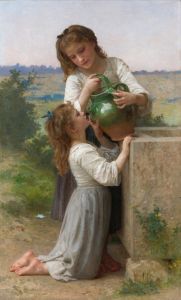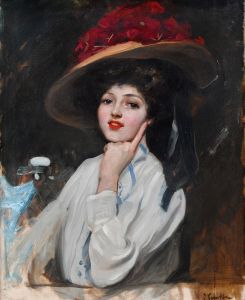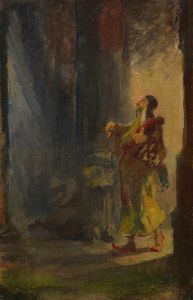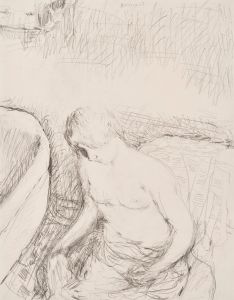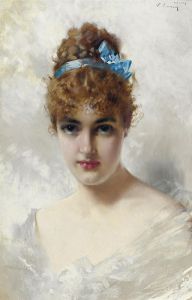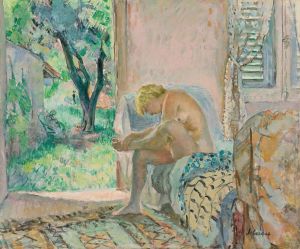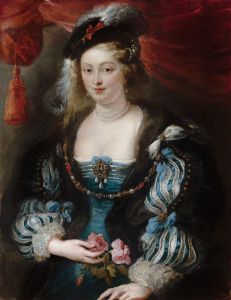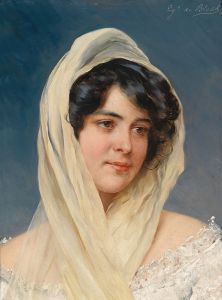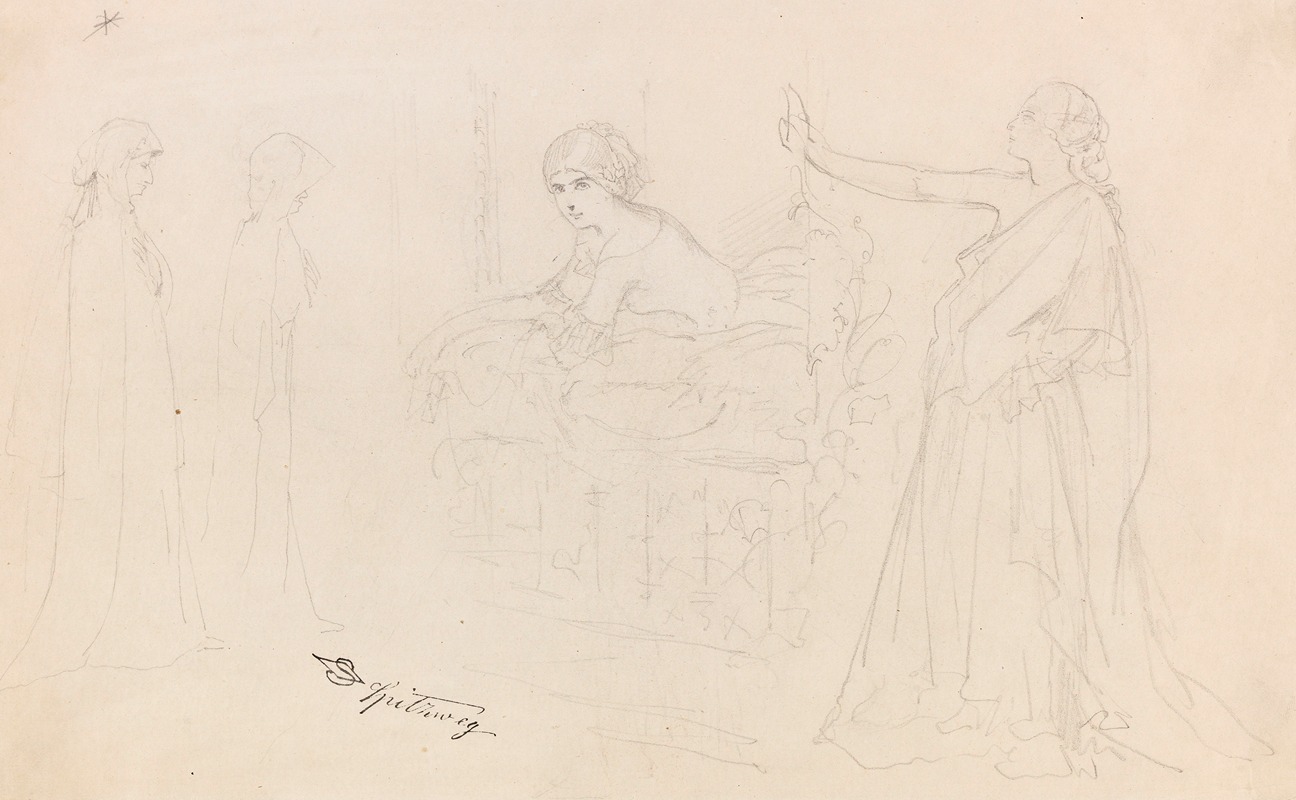
Figurenstudien; Eremit, Junge Frau am Fenster, Allegorie
A hand-painted replica of Carl Spitzweg’s masterpiece Figurenstudien; Eremit, Junge Frau am Fenster, Allegorie, meticulously crafted by professional artists to capture the true essence of the original. Each piece is created with museum-quality canvas and rare mineral pigments, carefully painted by experienced artists with delicate brushstrokes and rich, layered colors to perfectly recreate the texture of the original artwork. Unlike machine-printed reproductions, this hand-painted version brings the painting to life, infused with the artist’s emotions and skill in every stroke. Whether for personal collection or home decoration, it instantly elevates the artistic atmosphere of any space.
Carl Spitzweg was a renowned German painter and poet of the 19th century, celebrated for his contribution to the Biedermeier period, a time characterized by a focus on the middle class and a penchant for the idyllic and the domestic. One of his notable works is "Figurenstudien; Eremit, Junge Frau am Fenster, Allegorie," which translates to "Figure Studies; Hermit, Young Woman at the Window, Allegory." This piece is a testament to Spitzweg's skill in capturing the subtleties of human character and emotion through his art.
Spitzweg was born on February 5, 1808, in Munich, Germany. Initially trained as a pharmacist, he turned to painting after a period of illness, which allowed him time to explore his artistic inclinations. He was largely self-taught, drawing inspiration from the works of earlier masters and his contemporaries. His art often reflects a gentle humor and a keen observation of the everyday life of the bourgeoisie.
"Figurenstudien; Eremit, Junge Frau am Fenster, Allegorie" is a study of figures, a common practice among artists to refine their skills in depicting the human form and its various expressions. The title suggests that the painting includes a hermit, a young woman at a window, and an allegorical element, though specific details about the composition and themes of this particular work are scarce. Spitzweg's figure studies typically exhibit his characteristic attention to detail and his ability to infuse scenes with narrative depth and a sense of intimacy.
Spitzweg's works often explore themes of solitude, introspection, and the quiet moments of life, which may be reflected in the depiction of a hermit—a figure traditionally associated with seclusion and contemplation. The inclusion of a young woman at a window might suggest themes of longing or introspection, common motifs in Spitzweg's oeuvre. Windows in art often symbolize a barrier between the interior and exterior worlds, offering a glimpse into the subject's inner life or desires.
Allegory in art is a device used to convey deeper meanings through symbolic figures, actions, or imagery. While the specific allegorical content of this work is not detailed, Spitzweg's use of allegory typically involves a gentle critique or reflection on societal norms and human nature, often delivered with a touch of humor or irony.
Spitzweg's paintings are characterized by their warm color palette, meticulous attention to detail, and the ability to capture the essence of his subjects with empathy and subtlety. His works are celebrated for their narrative quality and the way they invite viewers to ponder the stories and emotions behind the scenes depicted.
Throughout his career, Spitzweg produced numerous paintings and drawings, many of which are housed in prominent museums and collections around the world. His work remains influential, admired for its charm, wit, and the insight it offers into 19th-century German society.
In summary, while specific details about "Figurenstudien; Eremit, Junge Frau am Fenster, Allegorie" are limited, the painting is indicative of Carl Spitzweg's broader artistic themes and techniques. His ability to capture the nuances of human experience through figure studies and allegorical elements continues to resonate with audiences, securing his place as a significant figure in the history of art.





